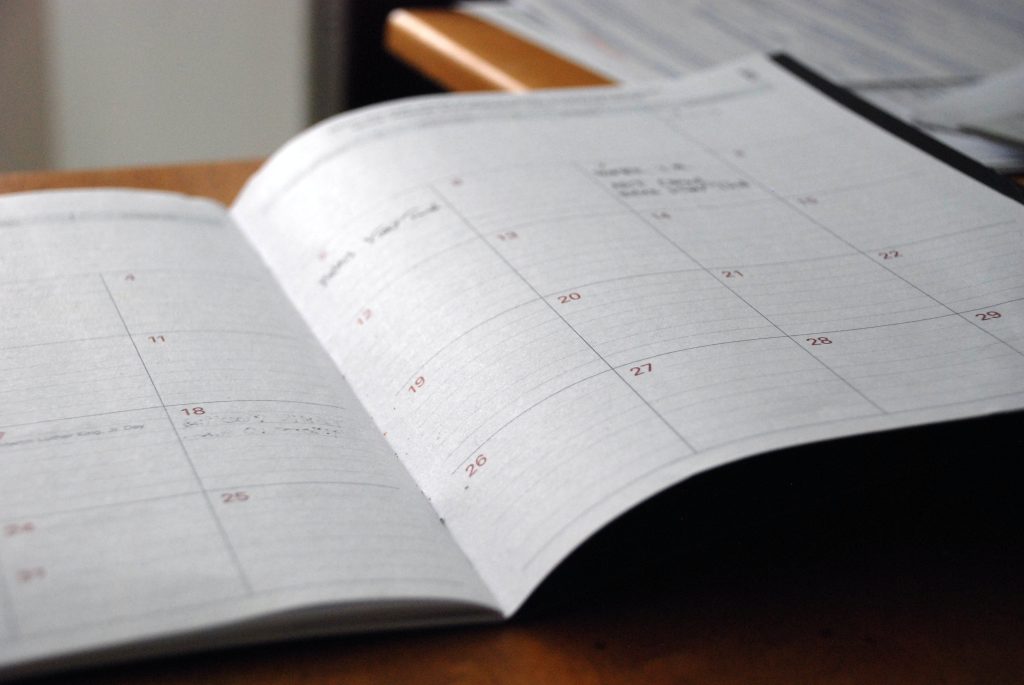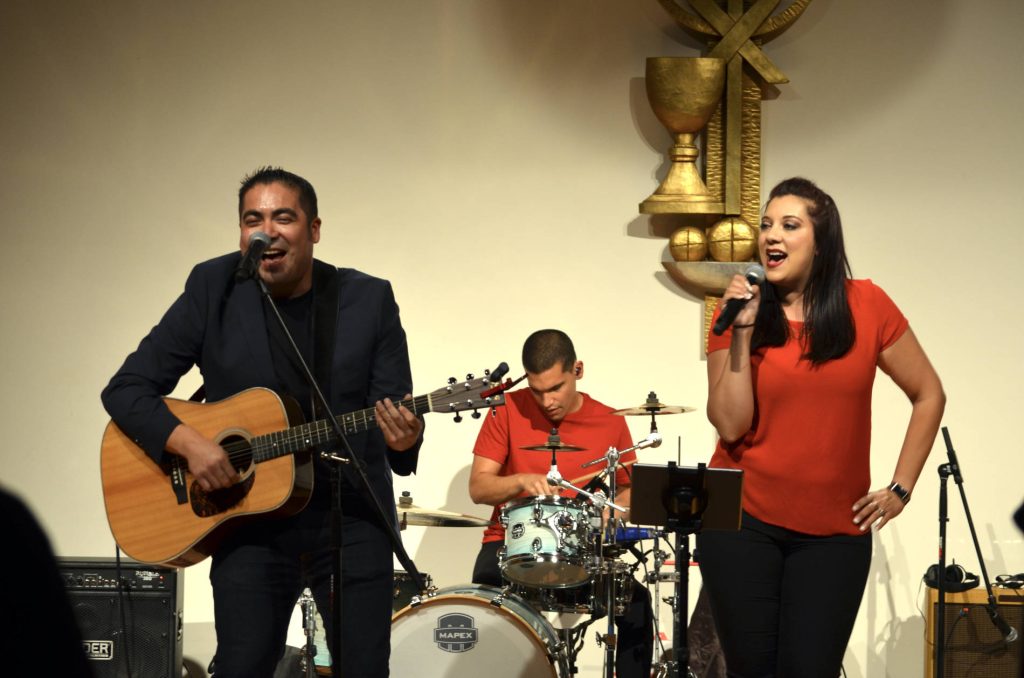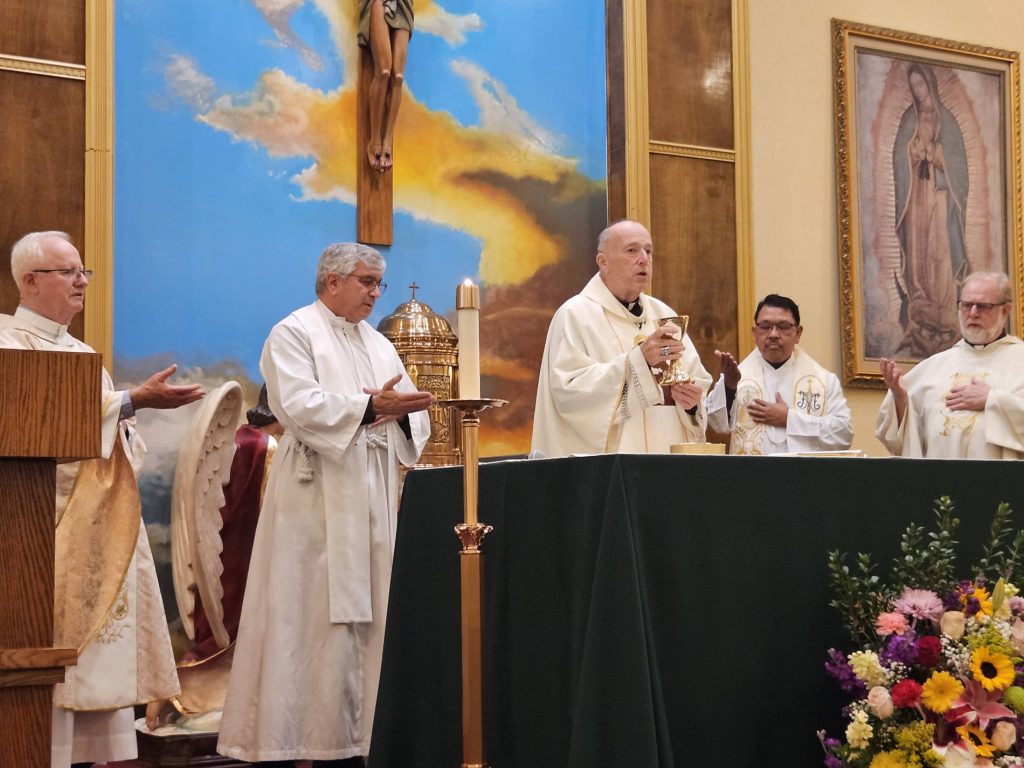SAN DIEGO — While donations are still down due to the COVID-19 pandemic, parishes are at least seeing an upward trend.
With the pandemic ongoing and a dispensation from Sunday Mass still in effect, church attendance was down by 75 percent as of mid-July. And with fewer people in the pews — or, since Masses are currently celebrated outdoors, on the folding chairs and beach blankets — local parishes have seen their donations take a significant hit.
But there are reasons for hope.
A growing number are returning to Mass, drawn by the sense of safety afforded by outdoor liturgies, and online giving options are making it easier for parishioners to support their parish from home.
Father Edmundo Zarate-Suarez is the pastor of two inner-city parishes, St. Anthony of Padua Parish in National City and St. Jude Shrine of the West Parish in San Diego.
His offertory collections are currently about 50 to 60 per-cent of what they had been before the pandemic, he said. But those numbers represent a vast improvement over the almost 80-percent drop in donations that his parishes experienced in March, when all public Masses were canceled.
After introducing an online giving option in mid-April, a larger number of contributions “slowly but surely” began coming in, he said.
“I worry more about the spiritual well-being of the people and what they’re going through,” said Father Zarate-Suarez, who encourages financially struggling parishioners to support the parish with their prayers and their time rather than with their limited funds.
But that doesn’t mean he is unconcerned about the parishes’ finances.
The numbers are heading in the right direction, he said, but the two parishes “continue to be in the red.”
And, despite smaller revenues, the parishes are still responsible for paying utility bills, staff salaries and other expenses. Because of the pandemic, there have even been additional costs, including purchasing the technology necessary to livestream Masses. Revamped websites and more reliable Internet connections were also must-haves.
Father Zarate-Suarez said a parish is “our second home.” Just as an individual or couple is responsible for the expenses and upkeep of their house, he said, parishioners share a similar responsibility for their parish.
In early August, St. Francis of Assisi Parish in Vista transitioned its employees from full-time to part-time and closed the parish office on Mondays, as a way of streamlining its budget.
After mentioning the parish’s financial challenges during the Aug. 15-16 Masses, Father Ruben Arceo saw an increase in donations. The offertory collection that weekend brought in about 45 percent of what it would have prior to the pandemic. Like Father Zarate-Suarez’s parishes, St. Francis of Assisi had seen an 80-percent decrease at the start of the pandemic.
But Father Arceo has remained hopeful.
“As people of God,” he said, “we truly believe that God is helping us and working with us throughout this process.”
While acknowledging that St. Francis of Assisi Parish doesn’t have “a big savings account,” he said it has “a treasure” in the form of its parishioners, who have traditionally been quick to respond to the parish’s needs.
Among local parishes affected by the drop in donations, Our Lady of Grace Parish in El Cajon is far from the hardest hit. Its parishioners are predominantly middle-class, and online giving has been a common practice at the parish for several years now.
But that doesn’t mean that decreased donations aren’t still an issue there. Prior to the pandemic, the parish would take in an average of $20,000 weekly through its offertory collection. Today, that figure has dropped to about $15,000.
“That’s actually very good,” Father Peter McGuine, the pastor, said of the current weekly amount. But he noted that the missing $5,000 each week adds up.
If the trend were to continue, that would mean a loss of about $260,000 over 12 months. And that’s when hard decisions would have to be made.
“We’re not going to close, but I may have to face the unpleasant reality of work furloughs, or cutting back on hours, or whatever the case might be,” he said. “I haven’t had to do that yet, but I can’t maintain the level of staffing that I have today” at the current donation levels.
During this difficult time, Father McGuine suggested that pastors bear some responsibility if they expect parishioners to continue making contributions. That means being as present as possible, given the restrictions of masks and social distancing, and celebrating Masses and other sacraments with regularity.
“It becomes a harder sell, frankly, to ask people to continue to support the parish, if they’re not seeing that the parish is actually providing ministry in some way,” said Father McGuine, who has kept up his pre-pandemic Mass and confession schedule.
Since the suspension of all indoor operations at places of worship, Father McGuine has continued celebrating Masses, confessions, weddings and funerals outdoors. And he is not alone in doing so.
“Pastors throughout the diocese have really stepped up during this unprecedented time,” said Manny Aguilar, director of the diocesan Office for Stewardship. “If we didn’t already love and appreciate our priests for what they’ve always done, we certainly have even more cause to do so now. Amidst allthe public health restrictions — and it’s been an extremely fluid situation, as we all know — they have shown such commitment and flexibility in finding ways to keep the Church’s mission on track.”
“As lay Catholics, it’s our turn now,” he added. “The mission continues, but it can definitely use our help.”
Aguilar suggested two ways that local Catholics can continue supporting their parishes: signing up for online weekly or monthly donations and sending in their offertory envelopes with a check or money order.









